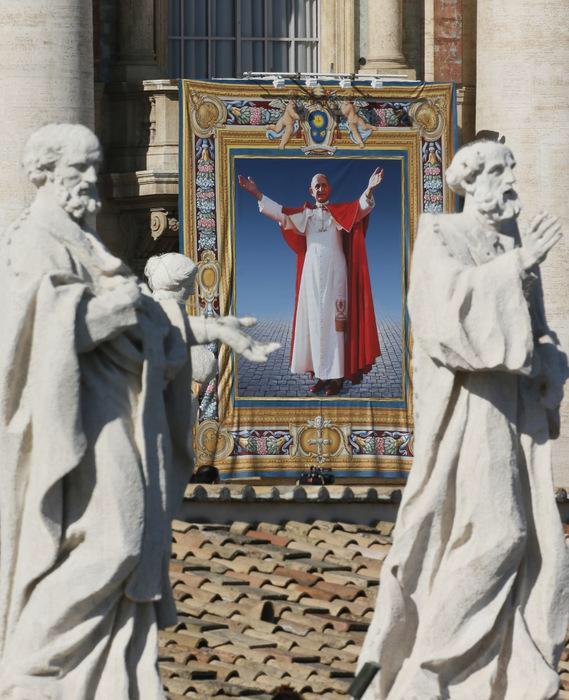Pope Paul VI: one step closer to sainthood
Pope Francis beatified Pope Paul VI on Oct. 19th in St. Peter’s Square in Vatican City. The beatification mass ended a two-week long assembly of bishops, known as a synod, called by Pope Francis to discuss modern family concerns. This synod left a divide within the Church, especially regarding views on ministering to homosexuals, offering communion to divorced Catholics who have remarried, and other issues.
Blessed Paul VI faced similar social issues during his papacy from 1963 until his death in 1978. During this time, many Catholics embraced sexual freedom and demanded approval of contraception from the Church. Blessed Paul VI is perhaps most well known for upholding the Church’s teaching against artificial contraception in his encyclical Humanae Vitae, meaning “of human life,” in 1968.
“One of the things that was going to be discussed [at the synod] was Pope Paul VI’s Humanae Vitae, the 1968 document that upheld the law and teaching of the church that artificial birth control is immoral,” said religion teacher Mr. Joe Gerardi. “It is interesting that when they are questioning Humanae Vitae, when he was the one who proposed this, Pope Paul VI is also beatified.”
This soft-spoken pontiff, formerly Cardinal Giovanni Battisti Montini of Milan, is remembered and venerated for much more than Humanae Vitae. He guided the Church through reform during a time of worldly unrest and encouraged others to spread the gospel.
“He led the Church with wisdom and a vision of the future,” Pope Francis said at the heavily attended mass, according to EFE.
Elected pope in the middle of Vatican II, Blessed Paul VI had the daunting responsibility to see the council to its completion. From 1963 to 1965, he influenced the reorganization of the Curia, the update of language spoken at mass from Latin to local languages, and the implementation of the Synod of Bishops.
In 1975, Pope Paul VI wrote his Evangelii Nuntiandi, “proclaiming the gospel.” In this document, he addresses the constant need of evangelizing and the importance of practicing what is preached in the Church. Pope Francis declared the Evangelii Nuntiandi “the greatest pastoral document written to date,” according to The Huffington Post.
Blessed Paul VI was a pope of many firsts, retired Cardinal Giovanni Battista Re told reporters. Similar to Pope Francis, he reduced his lavish appearance as a pope. He sold the papal tiara and donated the money to the poor. Also, he was the first pope to leave Italy in modern times. Even more impressive, he was the first pope to visit six continents. During a visit to the Philippines, an assassination attempt was made on Pope Paul VI. The blood-stained vest Pope Paul VI was wearing when he was stabbed was offered to Pope Francis as a relic at the beatification mass.
In May, a miracle was attributed to the intercession of Blessed Paul VI. This miracle involved an unborn child, whom was expected to be born with major birth defects in California. Doctors and nurses advised the mother to abort the baby. Throughout her pregnancy she prayed for Pope Paul VI’s intercession with his picture and part of his vestments which were given to her by a nun who was a close friend. The boy was born and is now a healthy 13-year-old.
Blessed Paul VI is now one step away from canonization. One more miracle must be attributed to Paul VI before he can be declared a saint.

